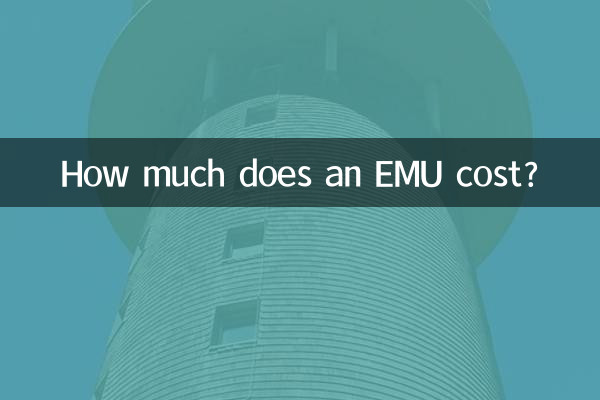How much does a train cost? Revealing the cost and market dynamics of China's high-speed rail trains
In recent years, the rapid development of China's high-speed rail has attracted global attention. As a core component of high-speed rail, the cost and market performance of EMUs have always been a hot topic of public concern. This article will combine the hot topics on the Internet in the past 10 days to provide you with a detailed analysis of the cost, type and market dynamics of EMUs, and attach structured data for reference.
1. Types and costs of China’s EMUs

The cost of EMUs varies depending on the model, technical configuration and procurement scale. The following is the reference price of the current domestic main mobile vehicle group types:
| EMU type | Reference unit price (100 million yuan) | Main features |
|---|---|---|
| CRH380A | 1.7-2.0 | With a speed of 380 kilometers per hour, it is widely used on trunk lines such as the Beijing-Shanghai high-speed railway |
| CRH380B | 1.8-2.1 | Strong cold resistance, suitable for Northeast region |
| CR400AF (Fuxing) | 2.0-2.3 | China's standard EMU, with a high degree of autonomy |
| CR400BF (Fuxinghao) | 2.1-2.4 | Higher degree of intelligence and improved comfort |
| CRH6 (intercity train) | 0.8-1.2 | Suitable for short-distance intercity lines with lower cost |
2. Factors affecting the price of EMUs
1.Technical configuration: The upgrade of technologies such as intelligence, energy saving, and comfort will significantly increase the cost of EMUs. For example, the price of the Fuxing EMU is higher than that of the early CRH series because it uses more independent technologies.
2.Procurement scale: Large-scale purchases usually reduce unit prices. For example, when China Railway Group purchases Fuxing trains in bulk, the price per train can be reduced by 5%-10%.
3.international market competition: When China's EMUs are exported, prices will be adjusted based on the demand of the target market. For example, the price of EMUs exported to Southeast Asia may be lower than the domestic purchase price.
3. Recent hot topics: Overseas market performance of China’s high-speed rail
In the past 10 days, the Jakarta-Bandung high-speed railway has been officially put into operation and has become a global hot spot. This is the first time that China's high-speed rail has brought its entire system, all elements, and the entire industrial chain overseas, and the cost of EMUs has also become a focus of discussion. According to public data, the cost of a single CR400AF EMU used in the Jakarta-Bandung high-speed railway is about 220 million yuan, which is slightly higher than the domestic purchase price, but it includes technical support and training services.
In addition, countries such as Thailand and Hungary have also expressed their intention to introduce China's high-speed rail technology. In the future, the export price of China's EMUs may be further market-oriented.
4. Future trends in EMU cost
With the maturity of technology and large-scale production, the cost of EMUs is expected to gradually decrease. Here are possible future trends:
| trend direction | Influence |
|---|---|
| Intelligent upgrade | Increase construction costs in the short term and reduce operation and maintenance costs in the long term |
| New material applications | Reduce body weight and reduce energy consumption |
| Export market expands | Large-scale production drives prices down |
5. Summary
The cost of China's EMUs is affected by many factors. From CRH series to Fuxing, the price range is between 170 million and 240 million yuan. With technological upgrading and international market expansion, the price and competitiveness of EMUs will be further optimized. In the future, China's high-speed rail may be more widely used around the world and become a bright business card of "Made in China".
If you are interested in the specific technical parameters or procurement details of the EMU, please pay attention to the follow-up in-depth analysis!

check the details

check the details